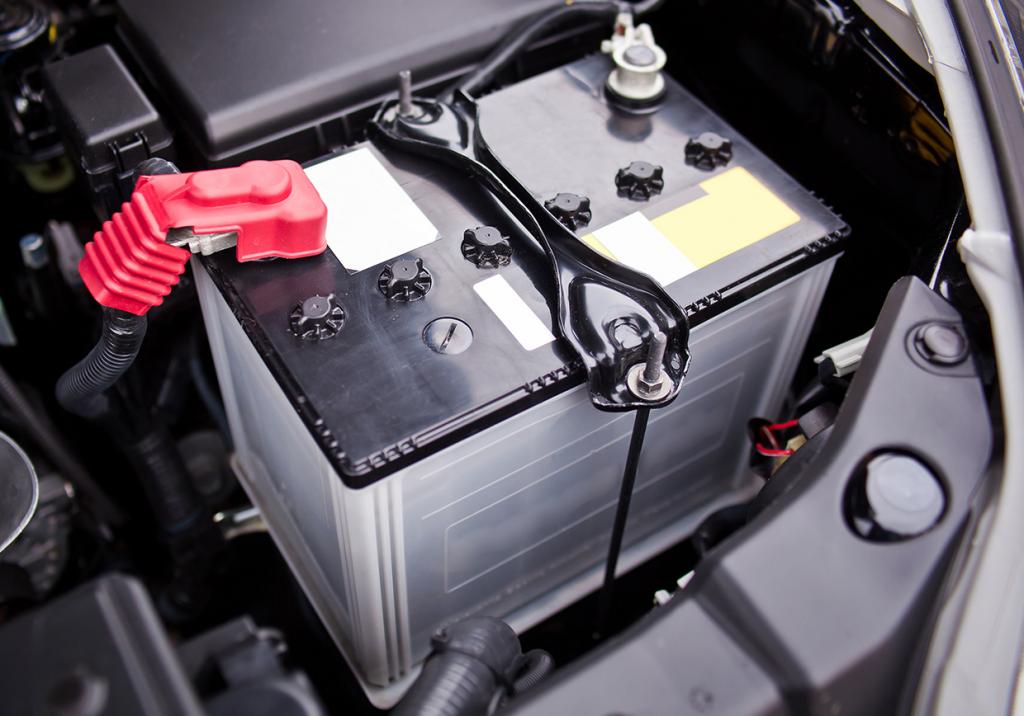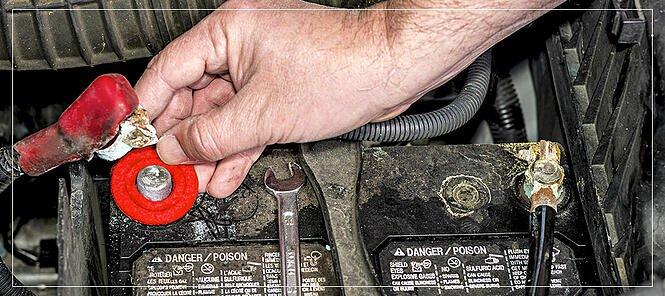How to use car batteries?

When cold, it needs care
When cold, the car battery will lose power, at the same time the engine needs more power to start. If the battery is not well maintained, the car will not start. AUTO BILD says how to prevent failure.
In ADAC breakdown statistics, it is at the top of the list as a cause of breakdown: the car battery. Any third party use of the breakdown is due to a dead battery. And especially in cold temperatures in Winter, many motorists are threatening to strike car batteries. To prevent such failures, the car battery needs proper care.
Maintain car battery and prevent failure
Ideally, the voltage of the car battery is always in the range above 12.6 volts. In order for this to remain the same in Winter and the car, the battery has a long life, one should prevent some measures. The declaration of modern batteries as "maintenance-free" does not mean that the battery does not require any maintenance. Maintenance-free only means that there is no plug for refilling water. However, even if the battery fluid does not need to be checked, the voltage should be checked regularly and the car battery should be recharged with the charger if necessary. By the way, this also applies to car batteries, which are disconnected over the Winter (for example, in classic cars). A disconnected battery also discharges over time and should be checked and recharged regularly.
This battery is more than 100 years old. However, the basic design with plates and Poles has not changed.
An important point in Battery Care is cleanliness: through damp dirt flow leakage currents that discharge the car battery permanently. Accordingly, it should be checked regularly whether the contacts and connections are clean. What batteries do not like at all is the Deep Discharge. For example, if the light was left on for a long time or the car was not driven for a long time, the voltage drops to a critical range, the capacity decreases sharply – sometimes until the total failure. Therefore, do not leave batteries in the discharged state, but recharge them immediately. Because the longer the voltage remains in the critical range, the stronger the battery is damaged. For this reason, it is also recommended to connect a battery to a charger regularly, which is used only for short-range operation.
If you want to prevent, even more, you can protect your battery with a thermal coating-then the battery does not cool so much in Winter. Important: the coating must fall back in the spring, otherwise there is a risk of overheating.
Why do car batteries strike in Winter?
As a result of cold, car batteries lose strength. If temperatures prevail of minus ten degrees, the power stores will lose about a third of their power. the engine oil is very viscous in cold conditions – at minus twenty degrees, the power consumption at the start of the engine doubles. For this reason, cold engines often jump at minus degrees only reluctantly. If a lot of short-haul operations are added, there is a risk of trouble. If the Daily path to work is only a few kilometers, while also running rear window and seat heating, the too little time remains to fully charge the battery. Then the failure is preprogrammed – the car no longer starts. Our short-range tip: Do not use electrical consumers, additionally maintain the battery with a charger.

In the longer term, short-range operation and non-full charging can cause severe damage to the battery: if the battery is at a voltage level below 12.4 volts for a long period of time, it becomes critical – sulphate formation begins. Lead sulphate crystals form, which is attached to the electrodes and reduce the charge capacity of the battery. The sulphate crystals are no longer able to charge, the capacity of the battery decreases. If the sulphate formation is so advanced that the battery can no longer be charged, it is called a sulfation. However, this process can be avoided by taking specific care of the car battery (e.g. regular recharging with a charger). If the battery capacity has already been noticeably reduced, a battery pulse (e.g. Novitec Megapulse) can help: the device generates voltage peaks during the charging process, which should reverse a sulfation.
Detecting weak battery warning signs
Prior to the failure, there are usually signs of a weakening car battery: The starter turns just tired on the engine. If the Motor only starts "just like this", the total failure is imminent. Even if the lighting is glowing or even failing at the start of the engine, this is a sign of too little voltage. Tip: Even without a voltage meter you can check the condition of the car battery. When the engine is switched off (ignition on), the low beam is switched on. If the light intensity of the headlights decreases noticeably after a short time, this is a clear indication of a weak battery. The Test works best in darkness.
If you recognize the warning signs, you do not need to replace the battery immediately. For now, it's enough to charge the battery. This can be done either by a longer trip (at least 30 minutes and preferably by Land) or by connecting it to the charger. If the battery strikes again, it should be checked. In order not to complicate the work of the car battery, all electrical loads (lighting, Radio, blower, etc.) should be switched off in general before starting the engine. If starting is unsuccessful, do not try for more than ten seconds. Then pause for at least half a minute and try again.
Car battery strikes: that's to do
This is how the startup help works
Start-up aid: if the battery is already discharged and the car no longer starts, start-up aid is necessary. In this case, another vehicle with its battery can give breakdown assistance. Important: pay attention to the correct sequence when connecting the batteries (more about the Startup Guide). It's easier with the so-called Start boosters: these are small Lithium-ion batteries, which help a slack battery back on the leaps. The helper car and a jumper cable are not required. Just the start booster to the battery terminals and start the vehicle.
Push: The tow-starting or Push-starting a car only works if the battery has a residual voltage. And: it only works with manual transmissions. When" sloppy " car put the second gear, clutch pedal after a few meters let come. Caution: if the vehicle does not start at the first meters, unburned fuel may enter the catalytic converter and damage it.
Charging: a slack battery does not always have to be replaced immediately. Often it is enough to connect the battery to a charger for one night (more about charging the car battery). Only if he then weakens again, he must be replaced. Important: the charger must be suitable for the type of battery.
Desulfation: if charging with the charger is no longer useful, sulphate formation is usually too advanced. The last attempt may be the Desulphation using a battery pulse. If you do not want to let it come to this point, you can also connect the battery pulse to your car battery permanently. The life span of the car battery should therefore at best be doubled.

